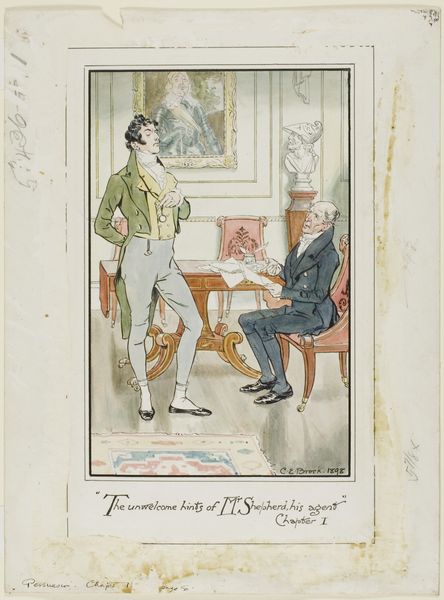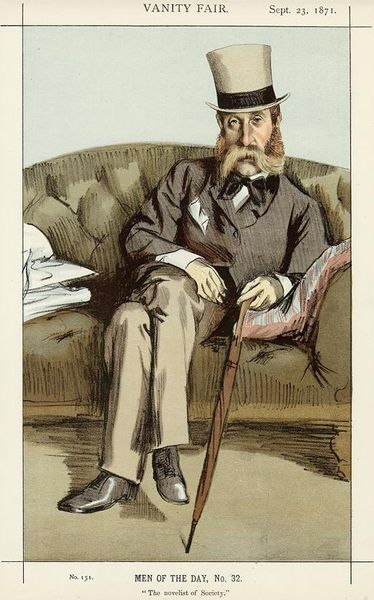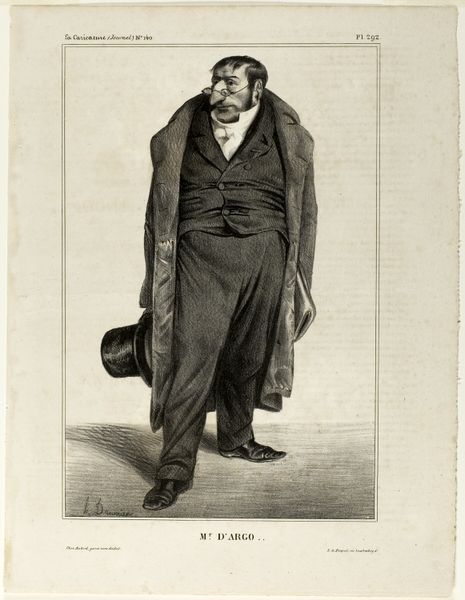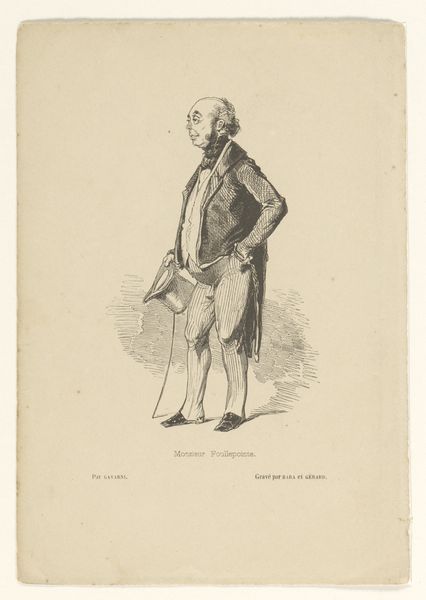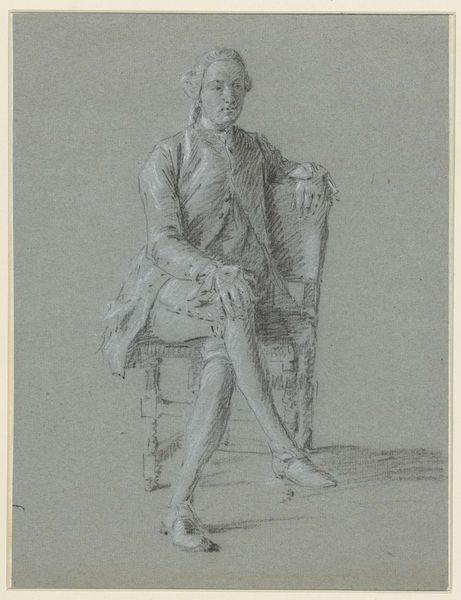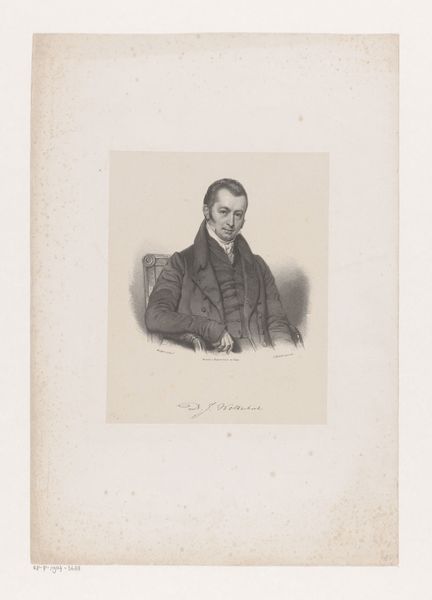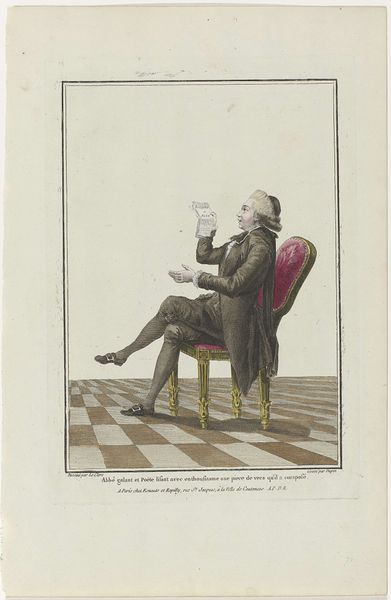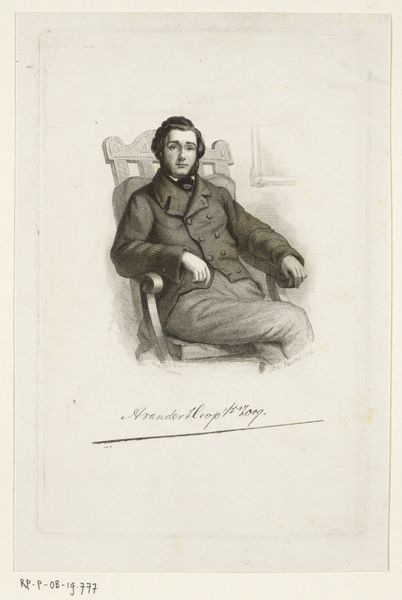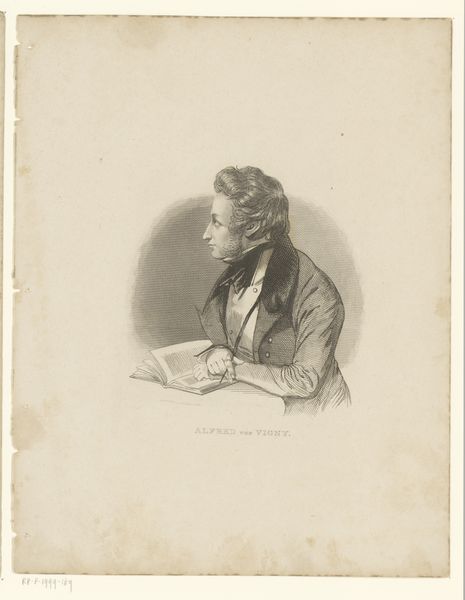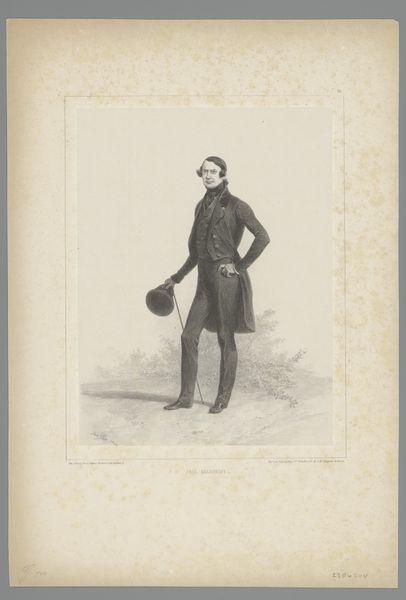
drawing, paper, pen
#
portrait
#
drawing
#
paper
#
intimism
#
romanticism
#
pen
#
genre-painting
Dimensions: height 104 mm, width 67 mm
Copyright: Rijks Museum: Open Domain
Editor: This is "Portret van Pieter Bzn Barbiers," a drawing from sometime between 1795 and 1813 by Joannes Pieter Visser Bender, housed right here in the Rijksmuseum. It’s an intimate portrayal; the sitter seems caught in a private moment of reflection. What do you see in this piece, viewed through a historical lens? Curator: Looking at this portrait through the lens of history, I see a fascinating reflection of the emerging bourgeoisie and evolving social dynamics of the Netherlands during the late 18th and early 19th centuries. The work encapsulates a pivotal period of transformation. Notice the sitter's clothing and bearing; he exudes a sense of restrained prosperity. What does that suggest to you about the societal values of the time? Editor: I guess that indicates the rise of a merchant class who wanted to present themselves with dignity and respectability, but maybe also not with the same ostentatious display of wealth that the aristocracy would. Is that fair? Curator: Precisely. It speaks to a shifting power dynamic, where status wasn't solely inherited but also earned through commerce and industry. This representation signifies that subtle statement, in the golden age tradition, however the painting inside the room indicates nature, thus reflecting also Romanticism, not just the intimate settings which clearly portrays the rising influence of the intimate over the political. What strikes you most about how such changes in social values are being captured within the art world and institutions? Editor: That the art world played an important part in forming and reflecting social trends, maybe more so than I realized! It wasn't just capturing likenesses, but also social standing and aspirations. Curator: Indeed, portraits like these acted as crucial tools for negotiating and visualizing shifting class and cultural structures, giving common people new types of representation. And that also gave power and importance to the art world. Editor: This really puts the piece in a completely new light. I had looked at it just in terms of intimacy but now it seems almost a political statement, simply by depicting everyday middle-class life. Curator: Exactly. The political resides even in the "everyday."
Comments
No comments
Be the first to comment and join the conversation on the ultimate creative platform.
